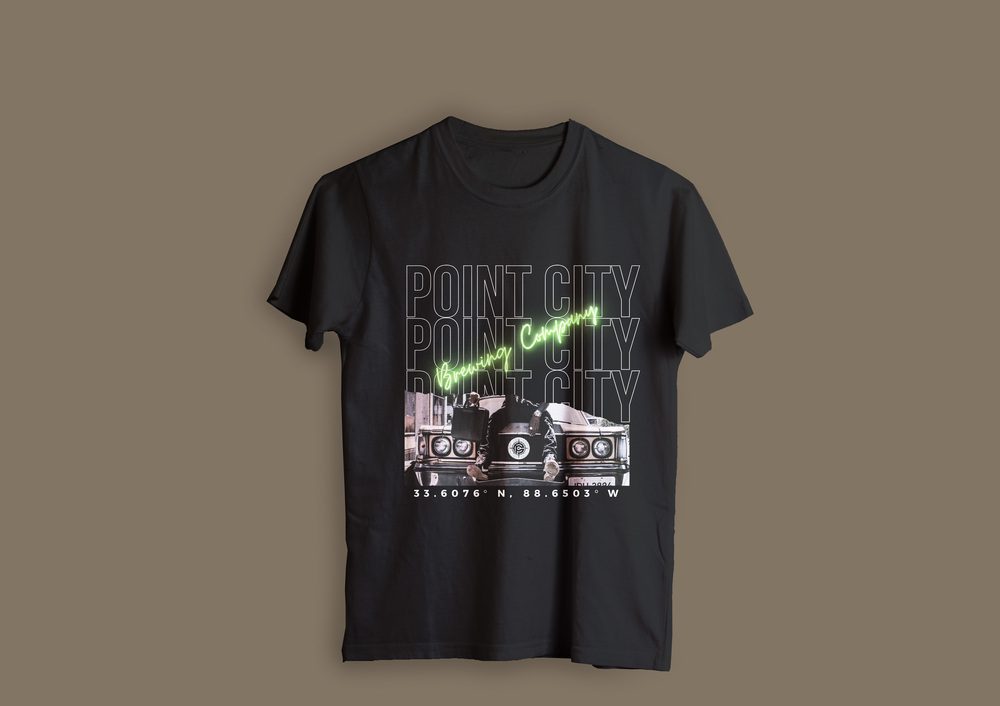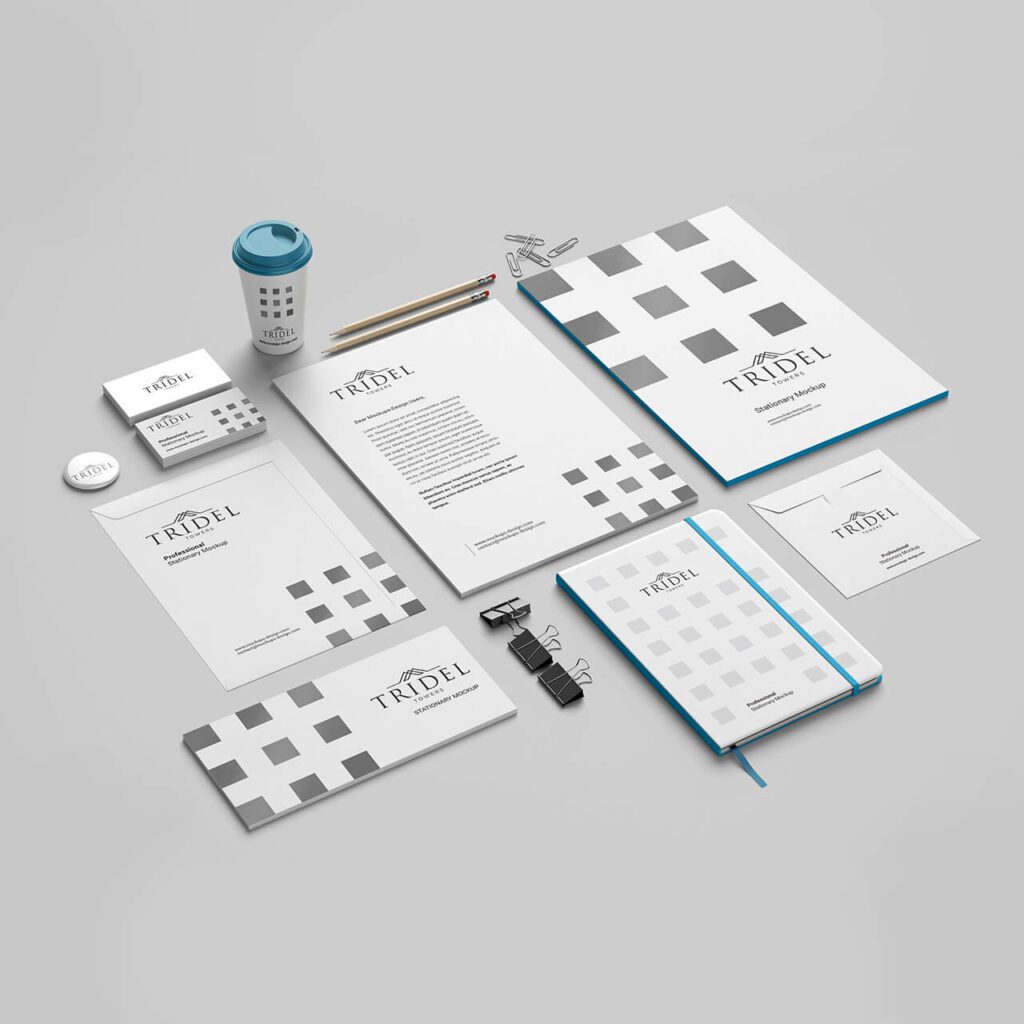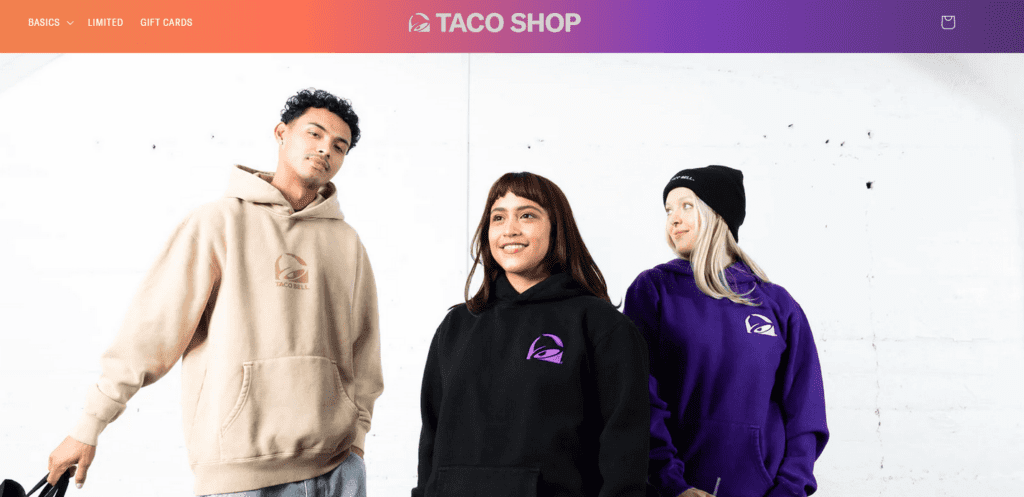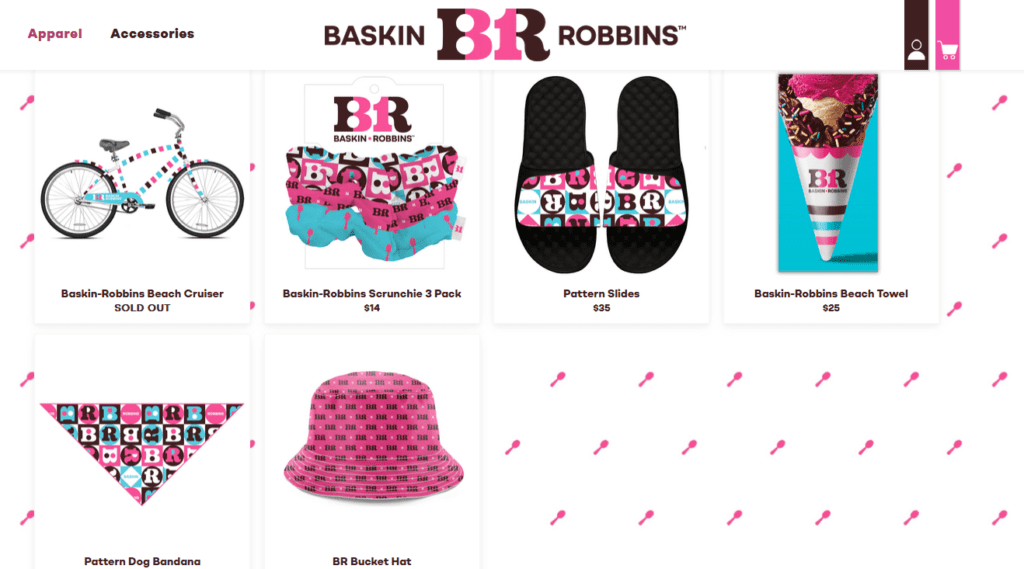Maximizing Impact with Branded Merchandise: Strategies for Success
Ever catch yourself craving a Coke just because someone walked by in a Coca-Cola hoodie? Or perhaps felt that sudden coffee craving seeing that person next to you holding a Starbucks cup? That’s not magic, folks, it’s the sneaky power of branded merchandise! It’s like subliminal advertising wrapped in everyday objects gently reminding you about their brand wherever you go.
But there’s more to branded merchandise than slapping your logo on a sweatshirt or a coffee mug. Branded merchandise is a marketing superpower, and we’re here to crack the code.

In this blog, we’ll dive into the psychology of why it works, explore intuitive strategies from popular brands, and show you how to harness this power for your own business. Think boosted sales from free mugs, and hats that build fan communities. Or even a whole new stream of revenue. Yes, branded merchandise is that powerful.
So, let’s answer the first question – why are branded merchandise so important in marketing?
Beyond Swag: Why Branded Merchandise is a Marketing Secret Weapon
Are you asking yourself if you really need to invest your budget in branded merchandise? Then here are some quick facts to consider.
- In a digital-forward world, creating a tangible connection can make a huge difference. And branded merchandise, by creating a sensory experience, helps build that tangible connection between brands and consumers.
- Promotional merchandise helps brands leave a lasting impression. Data shows that about 85% of people who receive branded merchandise often remember the respective brand. This level of brand recall is huge, especially in a competitive landscape where merely getting noticed can be a challenge.
- Additionally, branded merchandise creates a positive brand perception. It effortlessly boosts brand recognition which can be a huge plus for small businesses struggling to make a mark. A survey shows that nearly 83% of consumers can instantly name the brand of a branded product lying on their desk.
- The longevity of brand impressions that branded merchandise creates is yet another huge plus. According to the Global Ad Impressions Study conducted by the Advertising Specialty Institute, around 40% of people in the US who own promotional branded products have been holding on to them for over 10 years. Unlike ephemeral forms of advertising, promotional products have the potential to consistently reinforce brand visibility over an extended period.
- All of these points put together also establish the fact that branded merch can be a cost-effective marketing tool for businesses big and small.
Still not convinced? We’ll give you an example. Have you heard about the limited edition Stanley x Starbucks Quencher which is now selling like hot cakes on eBay? This real-world example underscores the immense value and demand that exclusive and carefully branded merchandise can generate.
The limited edition Stanley x Starbucks Quencher is now selling for hundreds on eBay https://t.co/aqqdIH714F
— CNBC Make It (@CNBCMakeIt) January 5, 2024
Tips to Level Up Your Branded Merchandise Game
From the benefits discussed in the above section, it’s clear that the buzz around branded merchandise is undeniable. But turning that buzz into genuine brand love takes more than adding your brand logo and colors to products.
You need to get strategic. So, let’s now talk about some secrets to crafting products that truly resonate, ignite loyalty, and convert customers into brand champions.
Choose the right type of merchandise
Branded merchandise can range from apparel like t-shirts to accessories like hats, drinkware like mugs and tumblers, and stationery items like notebooks and planners. The first question to explore is what type of product best resonates with your brand and with your target audience. The second one is, does your product solve a practical purpose? Because otherwise, users do not have a reason to hold on to your product for a long time.
For example, coffee mugs and tumblers feel like the safest branded merchandise options for a coffee brand. And they are practical too! Clothes and accessories are versatile choices and they work for most brands. Product categories like planners, office desk calendars, and other niche-specific ones are the trickiest to work with. So, choose a product line that easily fits into your marketing.
Align your branded merchandise with your audience
From choosing the right product to crafting the right design, most of the decisions regarding branded merchandise should be aligned with your audience. Because, unlike the rest of your products, these are ones meant to seamlessly blend into their everyday lives.
For this, your merchandise line should speak in their language. From the colors to the text every little detail should match their preferences and lifestyle. This increases the likelihood of them using the merchandise and also fosters a deeper connection with your brand.
Imagine: you spend a fortune on sleek, minimalist branded mugs. But your customers are adventurers who live for practical travel tumblers. The result? Missed connection! That’s why aligning your branded merchandise with your audience’s tastes is crucial.
For example, Taco Bell is known to target young adults. Hence, their merchandise range includes a host of casual laid-back designs in sweatpants, hoodies, beanies, and totes. Similarly, analyze the basic demographics as well as the nuanced details like your customers’ likes and dislikes to come up with designs that spark interest.
KIMP Tip: In addition to finding the right categories, find the right visual style that reflects your ideal target customer persona. From the colors to the typography and illustrations and images used in your design, every little detail should communicate a clear visual style as you can see in the below design. That’s when your merchandise strikes the right chord!

Align your merchandise with your brand
Having focused on what your customers are looking for, you cannot ignore your brand either. Your brand’s values, the niches you cater to, the problems your products solve – everything about your brand can inspire you when it comes to branded merchandise design.
Take Baskin Robbins for example – a brand that perhaps comes to your mind when you think of summer. Most of the unique promotional products sold by the brand carry the summer and beach themes.
The next most important aspect about aligning your branded merchandise with your brand is to accurately represent your brand’s visual identity. In the above image, did you notice the signature Baskin Robbing color scheme appearing on the products?
Similarly, draw inspiration from your logo colors, your primary and secondary brand colors. Then comes the typography choice. If your brand’s core designs all carry a professional vibe and if you end up using quirky fonts in your merchandise, there is a strong disconnect! So, your branded merchandise might sell but they might not do much for your brand.
The below design, for example, incorporates a sleek and modern monochromatic color scheme aligned with the brand’s visual identity.

Understand and leverage trends
From graphic design trends of the year to the pop-culture trends everyone is talking about, and seasonal references, contextual customization adds more value to your branded merchandise. It makes your merchandise feel more relevant. It’s about strategically incorporating popular elements that complement your brand and resonate with your audience.
Because when you understand the underlying motivations and consumer behaviors driving trends, you can tailor your merchandise strategy for sustained relevance and boosted sales.
Brands like Taco Bell introduce seasonal collections like the summer collection featured in the below post.
Google is yet another brand with a diverse portfolio of branded merchandise. In addition to the regular products, they have collections based on occasions like the Pride Month collection for example.
Another great idea is to hop on meme trends and annual color trends as well as design trends. Because these are ephemeral themes you cannot use in your core branding designs. However, you can always work on limited-edition branded merchandise to create a sense of urgency and boost the sakes.
Incorporate storytelling into your designs
A hoodie with your brand logo featured in a prominent location will do all the advertising you want. However, will it leave a lasting impact? Perhaps not. For that to happen, you need to tell a story through your designs. If it’s just boosted sales you are looking for, the former works but incorporating storytelling makes your merchandise line more meaningfully aligned with your brand.
This could be a story that captures your brand values or one that talks about your recent campaigns. Or even a story about your sustainability measures, like Google’s “Fill it Forward” bottle. The design incorporates a QR code along with the signature Google branding. Scanning this QR code allows users to understand the amount of plastic they avoided by reusing the bottle.
The above design shows how you can deepen the emotional impact of your merchandise through visual cues. Because people crave stories. Therefore, when your branded merchandise weaves a story that resonates with your audience, it ignites their imagination, fosters emotional connection, and makes them feel like they are part of something bigger.
Moreover, these are the kinds of designs that make a statement and act as conversation starters. Because when people love the idea and feel connected with it, they talk about it with their friends. They share your product on social media and this further boosts your brand’s visibility.
KIMP Tip: To tell a story, you do not always need intricate visuals or a large space. Like the design below, you can use simple icons and illustrations to communicate the underlying message in a more impactful way.

Add a touch of personalization
The core design could be a reflection of your brand, the underlying promotion and story. However, if there is at least one element that helps personalize the product for each customer, then it takes your branded merchandise to the next level. Because personalization transforms branded merchandise from generic giveaways into unique, cherished possessions. This could be something as simple as a personalizable name label or a space to add a custom message.
Let’s look at Starbucks’ merchandise range for example. The brand is undoubtedly a pro when it comes to branded merchandise. Their cold cups for summer and themed cups for special occasions are all very popular both offline and online.
The below post highlights one of their personalizable merchandise, a cold cup with a ready-to-color paper for customers to add their creative flair to personalize their cups.
Color your own adventure in a cold cup!🌈 ☀️This Cold Cup comes with a multicolored crayon and a ready-to-color paper insert. Now available in stores. pic.twitter.com/UhVuanLhmb
— Starbucks Malaysia (@StarbucksMY) August 10, 2018
Such personalizations create a sense of ownership among your customers and make the product feel uniquely tuned to their interests.
Having addressed the question of designing the right kind of branded merchandise for your brand, let’s now move on to discuss the applications. Where in marketing can you leverage these products besides utilizing them as a dedicated revenue stream? Let’s find out.
Unleashing the Marketing Magic of Branded Merchandise
- Events: Swag bags and event-focused merchandise help boost the memorability of both virtual and offline events.
- Giveaways: Social media contests and giveaways are known to boost conversions and engagement on social media. You can give your branded merchandise as a reward in such giveaways.
- Partnerships: To boost the effectiveness of brand collaborations you can create limited-edition merchandise featuring both brands.
- Celebrating milestones: If there is a crucial brand milestone you want your customers to know about, you can create exclusive branded merchandise to celebrate this.
- Celebrating festivals: Branded merchandise can be sent as freebies during festivals so as to reward customers and make them feel special during festive occasions.
- Welcome kits: If you wish to start strong, if you wish to motivate customers to place their first order, or get to know your brand better, you can always create a welcome kit with your branded merchandise.
- Influencer marketing: Branded merchandise can be visual and tangible reminders of your brand in influencer collaborations.
- Loyalty programs: To create a sense of exclusivity and to make loyal customers feel rewarded, you can add branded merchandise as freebies or even as welcome kits for customers who sign up for your loyalty programs.
Transform Your Branded Merchandise Designs With KIMP
Clearly, your branded merchandise acts as your silent brand ambassador. Moreover, quality and design of your merchandise are the two main elements that make or break your merchandise marketing strategies.
Design isn’t just about aesthetics. It is about relevance, it is about storytelling, it is about personalization. Because a well-designed piece of merchandise is a reflection of your brand’s quality. This includes the strategic use of your logo, brand colors, text, and other visual elements.
Hence working with professionals feels like the most practical decision to make when it comes to designing branded merchandise. And when you need variety in your merchandise line, the option to visualize your designs on mockups, the ability to fine-tune your designs multiple times to achieve the intended results, you need an unlimited design subscription, like KIMP.
So, what are you waiting for? Register now for a free 7-day trial!




